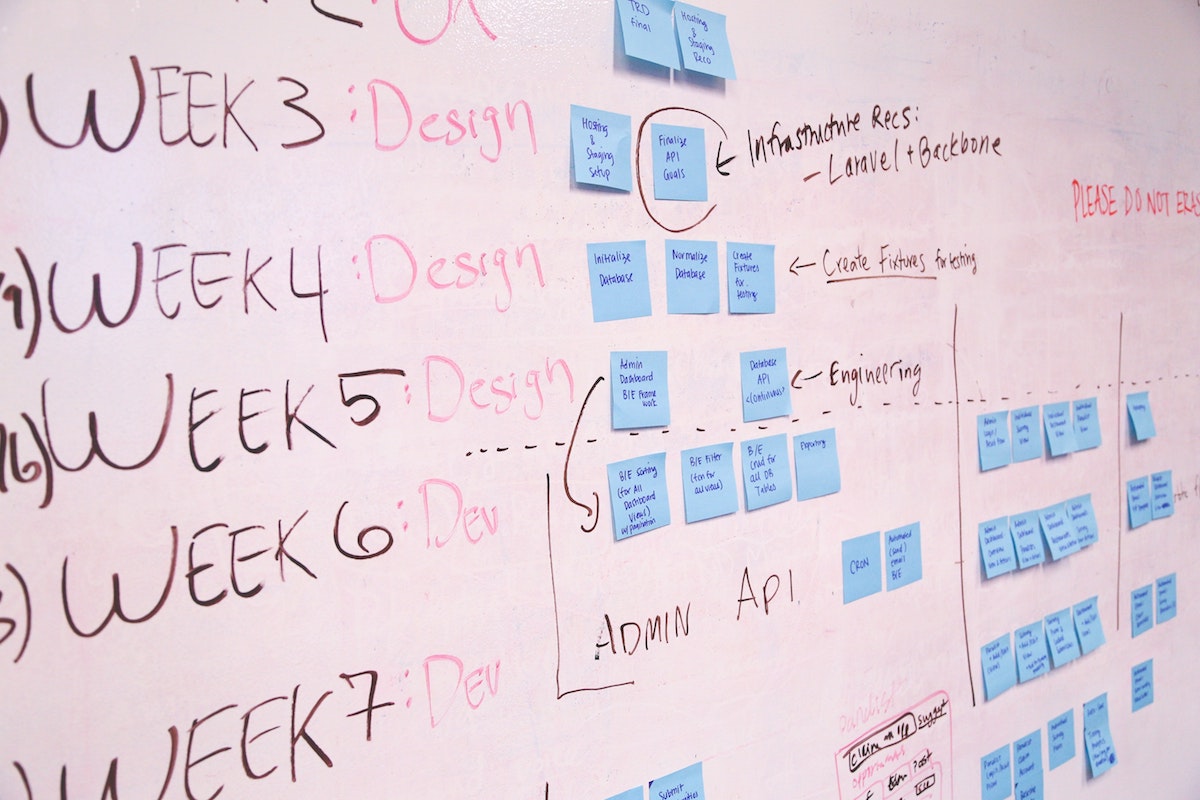The Project Management Institute’s 2020 Pulse of the Profession report reveals that 11.4 percent of business investment is wasted due to poor project performance. Today’s organizations must uncover the cause of these failures and determine what project management professionals can do to help overcome these challenges.
“For decades, we’ve been trying to improve the rate of project success,” says Northeastern University assistant teaching professor Jacques Alexis. “Poor planning has been one of the consistent causes of failure. Often this means the project management team did not engage stakeholders in the planning and therefore didn’t understand the scope of the project. If you don’t understand the scope of the project, then the schedule and the budget will be unrealistic. There is ample evidence that planning is a critical success factor in project management.”
Download Our Free Guide to Advancing Your Project Management Career
Learn what you need to know, from in-demand skills to the industry’s growing job opportunities.
How to Create a Realistic Project Plan in 12 Steps
Alexis is a scholar-practitioner with a unique combination of expertise in business economics, general management, portfolio, project, and operations management. He has nearly two decades of experience managing major programs and projects within the manufacturing and power generation industries. Based on his experience, he recommends project managers follow the below steps to develop a plan that results in quality deliverables on time and within budget.
1. Collect requirements from key stakeholders.
Once you’ve created a project charter and identified key project stakeholders, it’s essential to gather requirements. “You need input to generate output,” Alexis says. “The planning process starts with collecting requirements from stakeholders. Once you have this information, you will be able to define the scope of the project and determine exactly what you need to deliver to your stakeholders.
Strong communication skills are critical at this stage in the planning process. Without effective communication, it’s possible to miss important details that could be detrimental to the project’s overall success.
2. Define the scope of the project.
Ask yourself: “What is it the team needs to produce or deliver?” and “What problems are the stakeholders trying to solve?” Then, work with your stakeholders to develop a comprehensive description of the project and the product deliverables in the form of a project scope statement. You must have a clear understanding of the boundaries of the project.
For example, if you are building a software app for a customer, you must know what will be included in the app and what won’t. Who will use the application? What is it intended to do? What are the critical functions and features it needs to have?
3. Create a work breakdown structure.
Break down the project’s scope into smaller, more manageable deliverables and groups of related tasks, also known as “work packages.” This will allow you to assign resources to different parts of the project based on the skills needed. The work breakdown structure facilitates planning and coordination, which are two important functions of project management.
4. Define project activities.
Break down work packages into a list of project activities. Consider this an action plan. It can help to ask yourself: “What are the activities that must be performed to create the deliverables of the project?”
5. Sequence project activities.
“Almost everything happens in a sequence, but the trick is to do as many things in parallel as possible—if you have the resources to do so,” Alexis says. “One of the key reasons for adopting formal project management methodologies is to reduce time-to-market. In dynamic and hyper-competitive industries, the ability to reduce cycle time is a competitive advantage.”
6. Estimate activity duration, costs, and resources.
The cost, duration, and resources required to complete the project activities depend on the scope of the project. Proper estimating is important for any project, as it helps determine if the plan is viable, set expectations, and keep costs under control.
7. Assign resources to work packages and activities according to skills and interests.
Resources include not only labor but also materials, equipment, space, and technology. After identifying which resources you’ll need, Alexis suggests identifying the skill level needed for each activity.
“The scope and level of complexity of the project will help you determine in what areas you need to bring in high, mid-level, or entry-level skills,” Alexis says. This step allows you to determine the sequence of events that need to take place. To establish a realistic timeline, you’ll need to know how long each activity will take, how much each will cost, what resources (team members) you’ll need, and also when those resources are available (e.g., check into vacation schedules to avoid unexpected delays).
8. Build in contingencies.
“A plan without contingency is a bad plan,” Alexis says. “Projects rarely go as planned, so you need to build in backup plans. The contingencies can be determined by looking at historical data to identify risks that occurred on similar projects in the past.”
For example, if a vendor you’re relying on to deliver a key component of your project has had performance issues in the past, this could impact your schedule. If so, a contingency plan—such as identifying alternative vendors and estimating the costs if this risk should occur—is necessary. The key here is to consider both internal and external factors that may impact your project’s objectives. There are many factors outside of the organization that could add risk to the project, including the consumer price index, the economy, government issues (e.g., emerging regulations), and competitors’ actions.
Also, consider organizational culture when formulating your contingencies. The culture of the organization can impact certain elements of a project plan. For example, in some organizations, it’s common to pad estimates, while in others, there is an expectation that a project will have exact numbers.
9. Create a performance measurement baseline.
Develop an integrated scope-schedule-cost baseline for the project work, which will serve as a control tool for your project. Then, compare the execution of the project to your baseline to measure and manage performance. These baselines can be established through status reports within project management software applications.
“Performance should be measured throughout the project lifecycle,” Alexis explains. “This way, you can identify issues and take corrective action before it’s too late. It’s equally important to measure performance upon completion of the project. This allows you to compare actual results to their baselines to evaluate overall and individual performance.”
10. Develop all subsidiary plans.
“Developing a comprehensive and realistic project plan requires time and effort,” Alexis says. “However, planning can make your life easier during the execution phase of the project by preventing nasty surprises and misunderstandings.”
Most project plans need to incorporate the following subsidiary plans:
- Scope management plan
- Schedule management plan
- Cost management plan
- Quality management plan
- Resource management plan
- Communications management plan
- Risk management plan
- Procurement management plan
- Stakeholder engagement plan
- Requirements management plan
- Change management plan
- Configuration management plan
11. Document everything.
Document a project plan that outlines the scope, schedule, and cost of the project. Typically, plans should cover cost management, quality management, resource management, communication management, risk management, procurement processes, as well as ongoing stakeholder engagement (i.e., how to continually engage stakeholders through the lifecycle of the project.)
12. Build a knowledge base.
Some organizations have a learning culture where project managers are expected to document and share their plans. This can be a valuable way to learn from the mistakes and successes of others. In other companies where this historical knowledge isn’t documented, this could be more challenging, and it may be necessary to reach out directly to other project managers to gain insights.
Advancing in Project Management
Project management is a growing and in-demand career, but how do you take steps to grow in your role? Alexis recommends taking the following steps to further your project management career.
Make learning a daily habit. “Some of the most successful project managers I know regularly work on furthering their communication, team building, and negotiation skills,” he says.
Remember that learning is everywhere. Earning a degree is an important way to propel your career forward. You can also learn in other ways—from experience on the job and through support systems within the profession.
To demonstrate your skills to employers, you can also explore opportunities to earn various credentials, such as becoming a certified project manager. Data has shown that project managers who hold a certification and/or a master’s degree in project management typically earn higher salaries than their counterparts who do not.
Develop your technical skills. Like many fields, project management technology is continually evolving, so professionals need to stay ahead of trends in the field. For example, many project managers today are investigating the potential applications of artificial intelligence and robotics. “Artificial intelligence will play an important role in the way we collect, store, and share lessons learned in project management,” Alexis says. “Capturing lessons learned will be more structured, and machine learning will help reduce mistakes and project failure.”
Develop a strong network for support. Many professionals are willing to share their knowledge and experience. Two places to start are the Project Management Institute and project management groups on LinkedIn.
Hone your leadership skills. Power and influence are important, yet often project managers have project team members on their project who are not their direct reports, which can be an added challenge. However, you can influence people based on your power, which comes from different sources. Sometimes project managers will rely on their expert power to influence team members or their referent power—their ability to connect with others and develop connections within the organization. Simply knowing your field isn’t enough. Strong leadership and communication are essential skills for project managers.
Share the value of project management. Demonstrate to managers and others in the organization how project management is essential for developing the organization’s competitive advantage. Effective project management can result in measurable benefits such as improved productivity or reduced time-to-market for a new product.
To learn more about advancing your career as a project manager, including actionable tips and strategies, download our comprehensive guide below.
Editor’s note: This article was originally published in May 2019 and has since been updated for recency and accuracy.







Related Articles
Master’s in Project Management or an MBA: What’s the Difference?
6 Project Management Trends Emerging in 2023
Master’s Degree Comparison: Sports Leadership vs. Sports Management